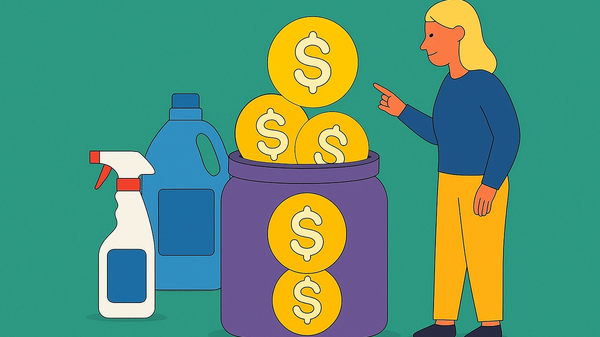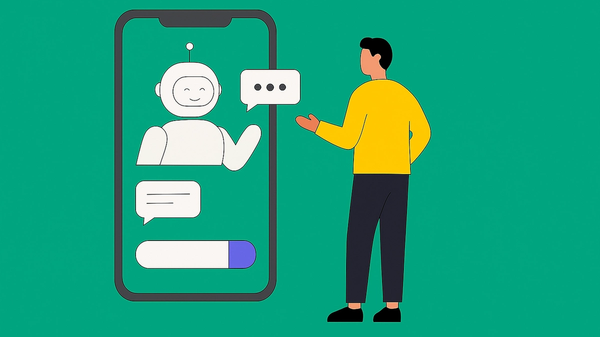Highlights:
- How to build (or rebuild) your emergency fund, where to park it, and how to optimize it for real life
- Simple ways to rebuild your emergency cushion without sacrificing your investments
- Sleep better at night knowing you’re ready no matter what life (or the market) throws at you
As passive investors, we know the drill: automate your investments, stay the course, ignore the noise.
But there’s one piece of the puzzle that’s easy to let slide because - let’s be honest - it’s just not as exciting as watching your portfolio grow.
Your emergency fund.
We dipped into our emergency fund to cover the last of our bathroom reno over a year ago… and instead of rebuilding, we bought our fav ETFs 🙈
Now that the markets are shaky and there’s a potential recession on the horizon, it’s the perfect time to make sure our emergency funds are ready.
Building (or rebuilding) your emergency fund
The amount you need depends on your life stage and responsibilities.
(There’s no perfect number!)
Some people feel comfortable with a couple of months’ worth of expenses, especially if they’re renters or don’t have large recurring costs.
Others aim for 6–12 months, particularly if they own a home or have variable income.
For example, my husband and I love our careers - but we don’t have the stability and security that other people have. Because of this, we need a bigger buffer than most people.
Your goal is to cover the essentials: housing, food, insurance, basic bills. Focus there first.
If your emergency fund has taken a hit, don’t stress - just start building back in small, steady steps:
- Automate savings the same way you automate your investments - set up an automated transfer each time your paycheque arrives
- Put part of windfalls like tax refunds or bonuses into your fund
- Turn on the automatic round-up feature so every time you make a purchase, the total is rounded up and the extra change goes straight into your emergency fund
Build separate buffers for "when, not if" expenses like home or car maintenance, so you’re not draining your emergency fund for predictable costs.
The more you treat your emergency fund like a regular, essential part of your financial system, the easier it becomes to grow it quietly in the background.
Where to keep your emergency fund
The goal here isn’t to maximize returns - it’s to keep your money safe and accessible when you need it most.
A few smart strategies:
- High-interest savings accounts (HISA): Options like EQ Bank, Motive Financial, or promotional offers from Tangerine are great. Direct deposit your pay if it unlocks a better rate.
- Split between accounts: Daily e-transfer limits are often capped at just $3000, and this can catch you off guard in a true emergency. (I speak from experience!)By keeping your fund spread between two banks or accounts, you’ll increase how much you can access quickly.
- Cash ETFs (like CASH or CSAV): Keeping your emergency fund in cash ETFs can earn you higher yields than a regular savings account while staying relatively low risk. Just keep in mind it can take a few days to sell the ETF and transfer the cash back into your bank account.
- GIC ladder: Great for larger funds you don’t expect to need right away. Short-term GICs staggered over time help keep your money growing, with regular access points.
- Cash accounts like Wealthsimple Cash: Simple, flexible, and often higher-yield than standard savings accounts.
Sinking funds help you plan for expenses
Your emergency fund is for surprises, but there are plenty of big expenses where you might not know exactly what’s coming, but you can anticipate the category.
Things like home repairs, car maintenance, or replacing appliances aren’t total shocks - you just don’t know when they’ll happen or what they’ll cost.
That’s where sinking funds come in handy.
By setting aside money for these specific categories ahead of time, you give yourself a buffer for the “when, not if” expenses. It keeps your emergency fund intact for true emergencies, while still being prepared for life’s predictable curveballs.
For example, our house is olddddd.
The rule of thumb is to plan to spend about 1% to 3% of your home's purchase price each year on repairs and maintenance. Given the age of our house, we set aside 3%.
This math has been spot on!
It’s made the ‘house emergencies’ way less stressful since we plan for them - even if we don’t know exactly what they might be. (Right now, we’re fixing a leak - it sucks, but at least we’re prepared!)
How to optimize your emergency fund
Once you’ve got the basics in place, you can make your emergency fund work a bit harder without taking on unnecessary risk.
Think of your fund in layers:
- Immediate cash buffer: Keep around one month’s worth of expenses in instant-access cash for day-to-day emergencies
- Medium-term cushion: Park the next few months’ worth in a high-interest savings account or cash ETF for better growth but easy access
- Optional overflow: If you’re building a larger safety net, consider a line of credit as a last layer of backup. Used responsibly, it can act as a temporary bridge without draining your savings
Plus, separating your emergency fund from your regular budget also helps avoid "accidental spending."
The goal here isn’t perfection. It’s building a flexible, reliable system that protects you in a range of situations, from a sudden job loss to those frustrating "everything breaks at once!" months.
This is about safety, not just savings
Your emergency fund isn’t about chasing yield or building wealth - it’s peace of mind.
It lets you handle life’s surprises without panic-selling your investments, going into debt, or feeling that pit in your stomach when unexpected expenses pop up.
And when your emergency fund is totally topped up, investing is even more satisfying since you know your bases are covered!
And if you want that same feeling with your investments, Passiv is here to help.
It automates your investments so they stay on track - so you can focus on enjoying life 🎉


